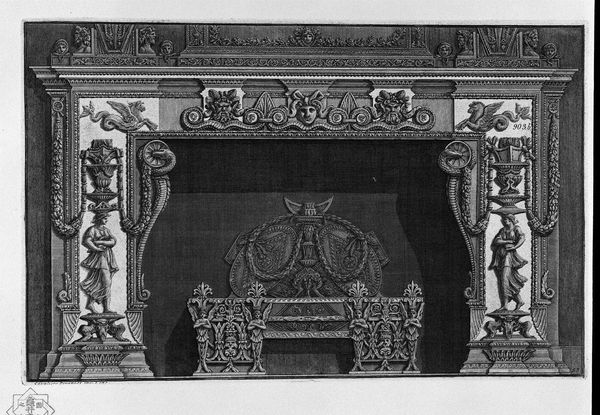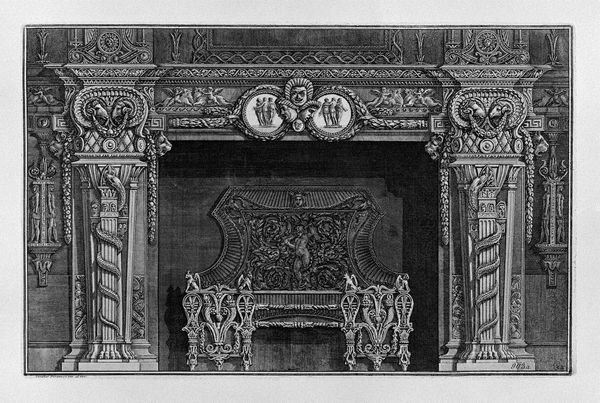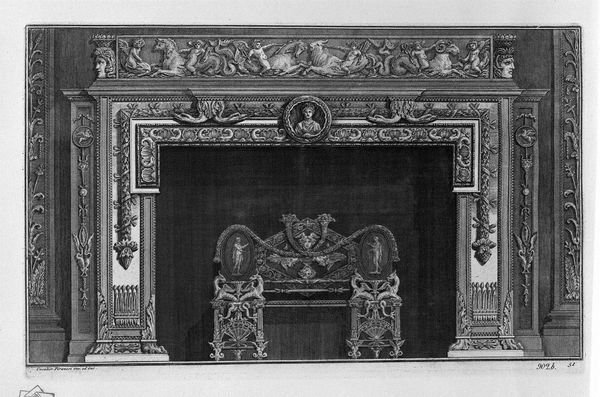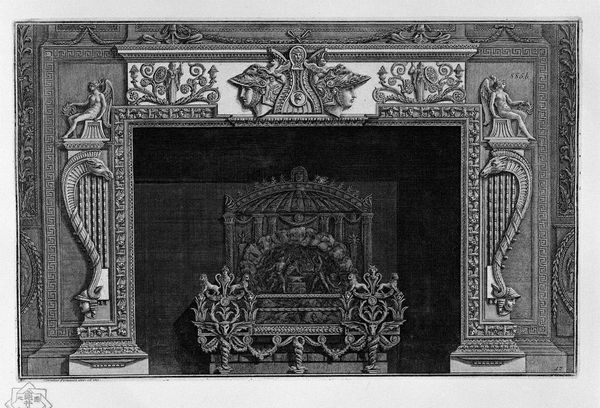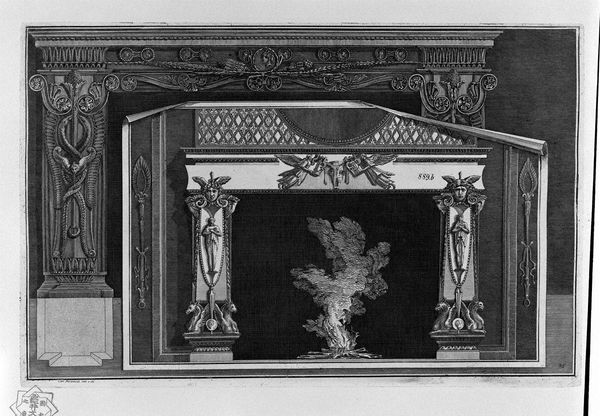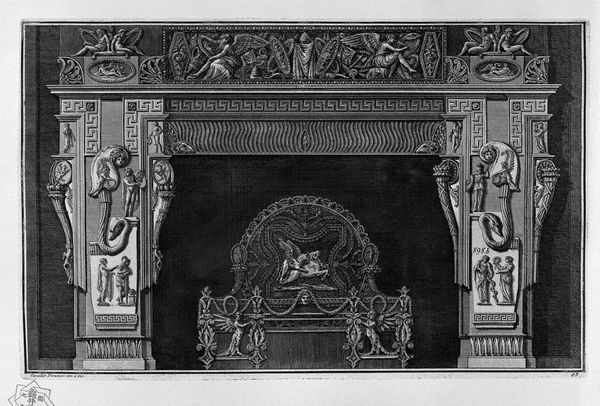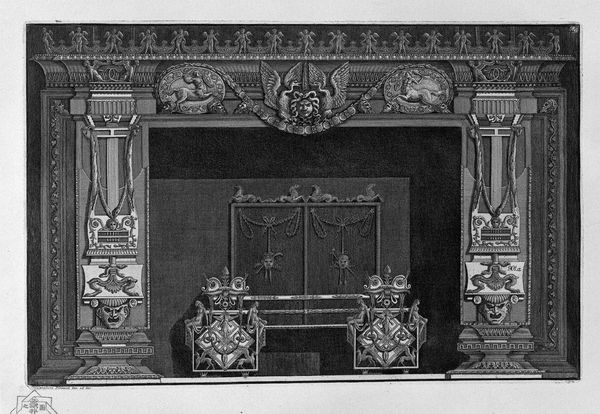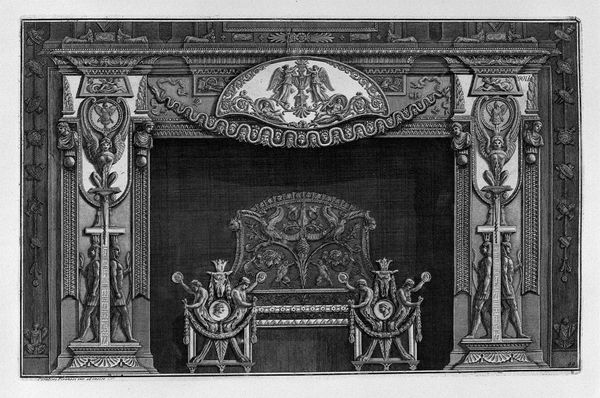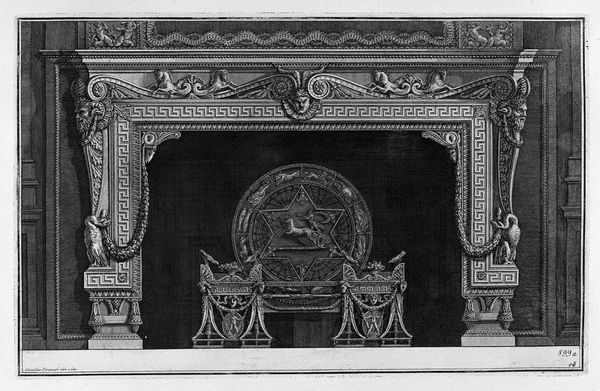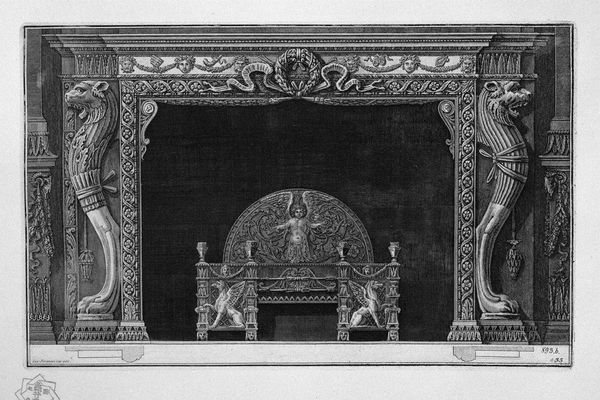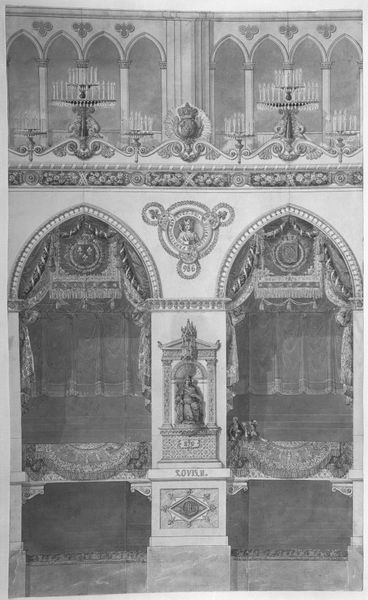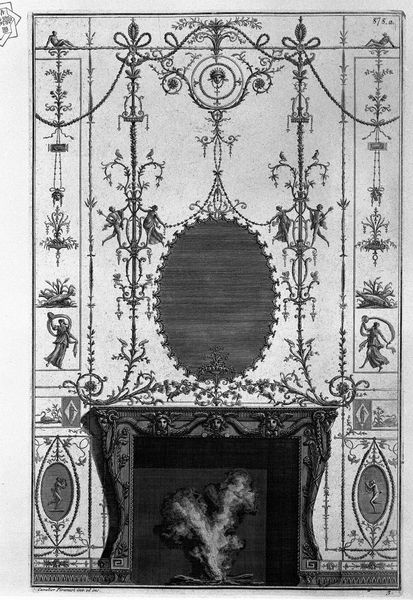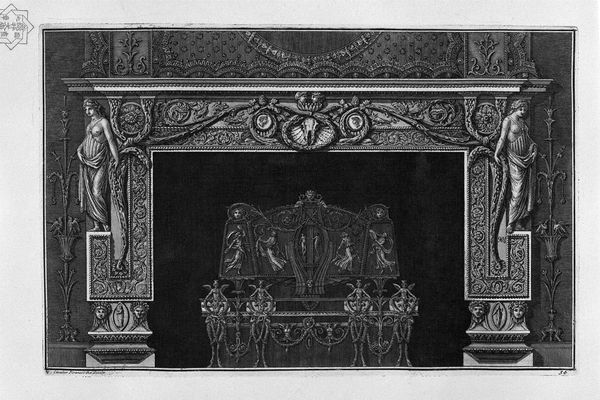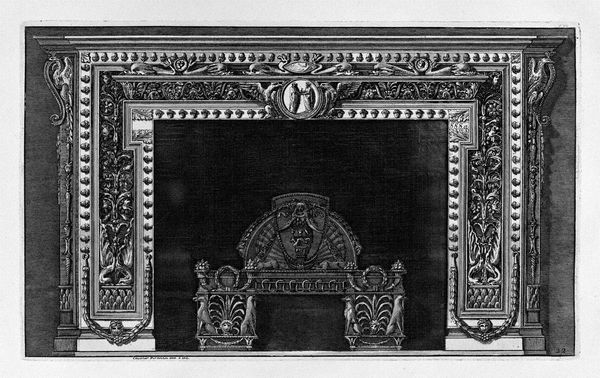
drawing, print, fresco, architecture
#
drawing
#
neoclacissism
# print
#
sculpture
#
fantasy-art
#
fresco
#
11_renaissance
#
cupid
#
architecture
#
history-painting
#
decorative-art
#
architecture
Dimensions: 14 15/16 x 20 7/16 in. (38 x 51.9 cm)
Copyright: Public Domain
Editor: This is a drawing entitled "Design for a Canopy Bed in an Alcove," created between 1770 and 1790. It's currently housed at the Metropolitan Museum of Art. The level of detail is amazing. What materials would they have even used to execute something like this at full scale? What do you see in this piece? Curator: Well, consider the socio-economic context. This wasn't about functionality, was it? Think about the labor involved: the quarrying, the carving, the weaving of those drapes, even assuming they're just *represented*. This bed becomes a monument to excess capital. Editor: So it's not *really* about sleep at all, is it? More like... conspicuous consumption made literal? All those chubby cherubs look pretty expensive too! Curator: Precisely. Look at the printmaking itself, how the lines are rendered, mimicking the textures of various expensive materials, like marble and fine textiles. Someone skilled etched this plate, and think of how many prints could be produced. Was this aimed at wider circulation or a smaller, more affluent audience? Editor: Hmm, the Met tags mention 'Neoclassicism', I thought it had a decorative art element to it. It’s almost theatrical, right? It feels staged, maybe designed to impress visitors. Curator: Stagecraft! Yes, excellent point. And it connects directly to issues of power and status. This drawing serves as both a design and a form of promotion, marketing not only the *object* but the lifestyle and social status that accompany it. Now, about the act of *production* and how many people had a role here... Editor: Right, from the artisan crafting the drawing, to maybe the client commissioning the design. There are so many hands. It is interesting to consider the materiality itself, rather than its aesthetic. Thanks!
Comments
No comments
Be the first to comment and join the conversation on the ultimate creative platform.
